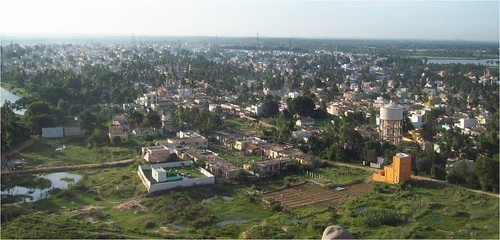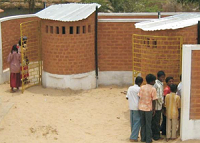/topics/toilets-and-urinals
Toilets and Urinals
Subsidy or shame Which technique works better in improving sanitation in India Talk by Sumeet Patil NEERMAN at the 3ie seminar at Delhi February 2013
Posted on 22 Nov, 2014 10:30 AMSubsidy proponents believe that the poor need economic incentives while shaming proponents contend that to bring out lasting behavioural change, intrinsic motivation is required; people are more likely to use and value things they have had to pay for.
Strategies for achieving environmental sustainability in rural development A report by United Nations Development Programme
Posted on 22 Nov, 2014 10:30 AMThis report by the United Nations Development Programme (UNDP) presents strategies for inclusive rural development embodying the principles of environmental sustainability. It recommends measures needed to achieve green, including measuring and tracking, the use incentives and the building of capacities. It also contains a number of case studies showing how green results can be achieved.
Anthropogenic activities leads to deterioration of groundwater quality: A study of Mayyanad and Edamulakkal panchayats of Kollam district in Kerala
Posted on 22 Nov, 2014 10:30 AMKerala is a rain blessed state in the country. It has highest number of wells, when compared with other states. However due to its slanting topography there is significant decline in the ground water levels leading to severe water scarcity during summer months in most districts of the state. Further over extraction and dependence of groundwater for domestic use from the dug wells especially in rural pockets has resulted in several groundwater problems. In this backdrop the paper in The Ecosan- An International Quarterly Journal of Environmental Science, sheds light on groundwater quality issues in two panchayats of Kerala.
The role of sanitation in girl child education: A documentary film by HEEALS
Posted on 22 Nov, 2014 10:30 AM
The role of sanitation in girl child education - A documentary film by HEEALS
HEEALS is a vibrant civil society organization that aims to safeguard health, environment, education and livelihood to promote sustainable development of society. Through the medium of documentary film and art it is trying to create awareness among the masses about girl child education, menstrual hygiene, sanitation and safe drinking water and attempting to relate how girl child education directly suffers due to bad sanitation facilities, unsafe drinking water and lack of knowledge to obtain the same.
Influence of anthropogenic contamination on fluoride concentration in groundwater: A study of Mulbagal town Kolar district Karnataka
Posted on 22 Nov, 2014 10:30 AMGroundwater contamination is a serious, but relatively ignored issue in the country. This contamination occurs in either through geogenic or anthropogenic means. Fluoride contamination is one such example of geogenic contamination that is widely found in the Kolar district of Karnataka. However, the fluoride levels in the town of Mulbagal are lower than those in the surroundings. Earlier, a study was conducted on the impact of pit toilets on the groundwater in the area. The present paper investigates the presence of any link between these two phenomena.
Guidelines on the integrated low cost sanitation scheme by Ministry of Housing and Urban Poverty Alleviation 2012
Posted on 22 Nov, 2014 10:30 AMThis document by Ministry of Housing and Urban Poverty Alleviation provides guidelines for the low cost sanitation scheme. The main objective of the scheme is to convert the existing dry latrines into low cost flush latrines and to construct new ones.
Analysis of Delhi's budgetary allocations for water and sanitation services in slum areas Article in Economic and Political Weekly
Posted on 22 Nov, 2014 10:30 AMThis article in Economic and Political Weekly, by analysing various budget documents, attempts to capture the quantum of budgetary outlay for Water and Sanitation Services (WSS) in the slums of Bawana and Bhalaswa in Delhi. Further it captures various systemic weaknesses that impede the effective delivery of WSS in these two slum areas.
A communication and advocacy strategy framework for sanitation and hygiene by the Ministry of Drinking Water and Sanitation and UNICEF 2012-17
Posted on 22 Nov, 2014 10:30 AMThe number people practicing open defecation in India is more than 600 million. Though the access to improved sanitation has increased since 2000 the pace of change has been slow. If the current trend continues then it will be difficult for the country to meet its Millenium Development Goal for sanitation. Thus accelerating access to and use of toilets and hygiene practices have become a national priority.
A toilet that loves the environment: A film by the Himalaya Seva Sangh highlighting Uttarakhands experience with ecosan toilets
Posted on 22 Nov, 2014 10:30 AMThe Himalayas are inhabited by 40 million people, most of whom are dependent on agriculture and animal husbandry. The prevalent water scarcity also means a lack of water for sanitation. In this case, both open defecation and conventional sewerage pose a health risk. Conventional toilets not only consume a lot of water, but the effluent also pollutes groundwater.







